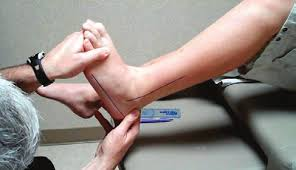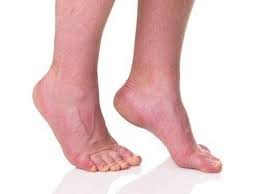Addressing Ankle Equinus
The ankle serves as a critical pivot point, enabling fluid movement and stability in our daily activities. However, when a condition known as ankle equinus silently makes its presence felt, it can significantly impact mobility and lead to a cascade of musculoskeletal issues.
Ankle equinus, often underdiagnosed and overlooked, is a biomechanical disorder that restricts the ankle’s full range of motion, impeding proper gait and potentially giving rise to a myriad of complications.
In this article, we’ll give you an insight into the ankle equinos condition, including what causes it and what you can do about it.
What is ankle equinus?
Ankle equinus is a condition characterised by limited ankle joint flexibility, particularly in the upward movement of the foot. It refers to a decreased ability to achieve a neutral or 90-degree angle between the foot and leg.
This restricted range of motion can affect normal foot function and lead to various foot and ankle problems.
What causes ankle equinus?
Ankle equinus can have multiple causes, including tight calf muscles, Achilles tendon contracture, previous ankle injuries, neurological conditions, and structural abnormalities in the foot and ankle.
Tight calf muscles, often due to genetics, improper footwear, or muscle imbalances, are a common cause of ankle equinus.
What are the symptoms of ankle equinus?
The symptoms of ankle equinus can vary, but commonly include difficulty walking uphill or on uneven surfaces, ankle pain or stiffness, foot and leg fatigue, toe-walking, and compensatory gait changes.
Over time, ankle equinus can contribute to conditions such as plantar fasciitis, Achilles tendonitis, shin splints, and foot deformities.
How is ankle equinus diagnosed?
Ankle equinus is diagnosed through a comprehensive evaluation by a podiatrist. They will assess the range of motion in the ankle joint, evaluate gait patterns, and perform various tests to identify the underlying cause of the equinus.
Often, imaging studies like X-rays or MRI are ordered to evaluate the joint structures and rule out other possible conditions and causes such as Binet impingements.
What are the potential complications of ankle equinus?
Ankle equinus can lead to several complications if left untreated.
It can increase the risk of foot and ankle injuries, such as ankle sprains, stress fractures, and tendon strains.
Studies have shown that limited range of motion can also contribute to abnormal foot mechanics, leading to conditions like plantar fasciitis, bunions, and hammertoes.
It is important to seek treatment for ankle equinus to prevent these potential complications.
Can ankle equinus be treated without surgery?
In many cases, ankle equinus can be effectively treated without surgery. Non-surgical treatment options include stretching exercises, physical therapy, orthotic devices, shoe modifications, and footwear recommendations. These conservative measures aim to improve ankle flexibility, alleviate symptoms, and prevent further complications.
What are the surgical options for ankle equinus?
Surgical options for ankle equinus are considered when conservative treatments have been unsuccessful or in cases of severe structural abnormalities.
The specific surgical approach depends on the underlying cause of equinus.
Surgical procedures may involve lengthening the Achilles tendon, releasing tight structures around the ankle joint, or addressing structural deformities in the foot or ankle.
Can ankle equinus be prevented?
While it may not be possible to prevent all cases of ankle equinus, there are measures that can help reduce the risk, including the following:
- Regular stretching exercises to maintain flexibility in the calf muscles and Achilles tendon are beneficial.
- Wearing appropriate footwear that provides proper support and allows for natural foot movement is also important.
- Maintaining a healthy weight and avoiding excessive high-impact activities can help minimize the risk of developing ankle equinus.
When should I see a podiatrist for ankle equinus?
If you are experiencing symptoms such as limited ankle movement, pain, or gait abnormalities, it is recommended to seek professional care from a podiatrist. They can evaluate your condition, determine if ankle equinus is present, and recommend the appropriate treatment plan. Early intervention can help prevent complications and improve overall foot and ankle function. At Hurst Podiatry, our experienced team is dedicated to diagnosing and treating ankle equinus to help our patients regain mobility, alleviate pain, and enhance their quality of life.
Book in to see our Podiatrists here at Hurst Podiatry
Ankle equinus is a condition that can significantly impact foot and ankle function, leading to various complications if left untreated.
At Hurst Podiatry, our skilled team of podiatrists specialises in the diagnosis and treatment of ankle equinus.
We understand the importance of restoring ankle flexibility and addressing the underlying causes to promote optimal foot health.
With our comprehensive approach, we offer a range of non-surgical and surgical options tailored to each patient’s specific needs.
If you are experiencing symptoms of ankle equinus or have concerns about your foot and ankle health, schedule a consultation with our dedicated team at Hurst Podiatry.
Let us help you regain mobility, enhance your foot function, and improve your overall quality of life.






